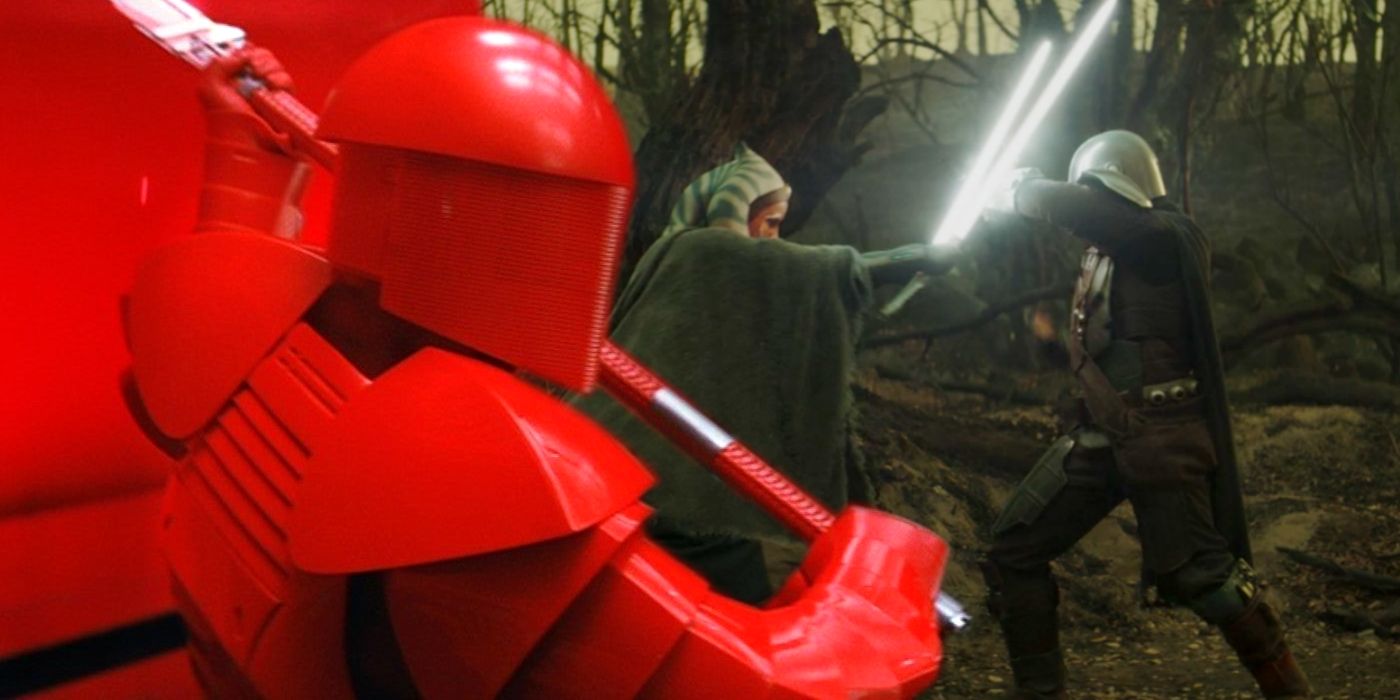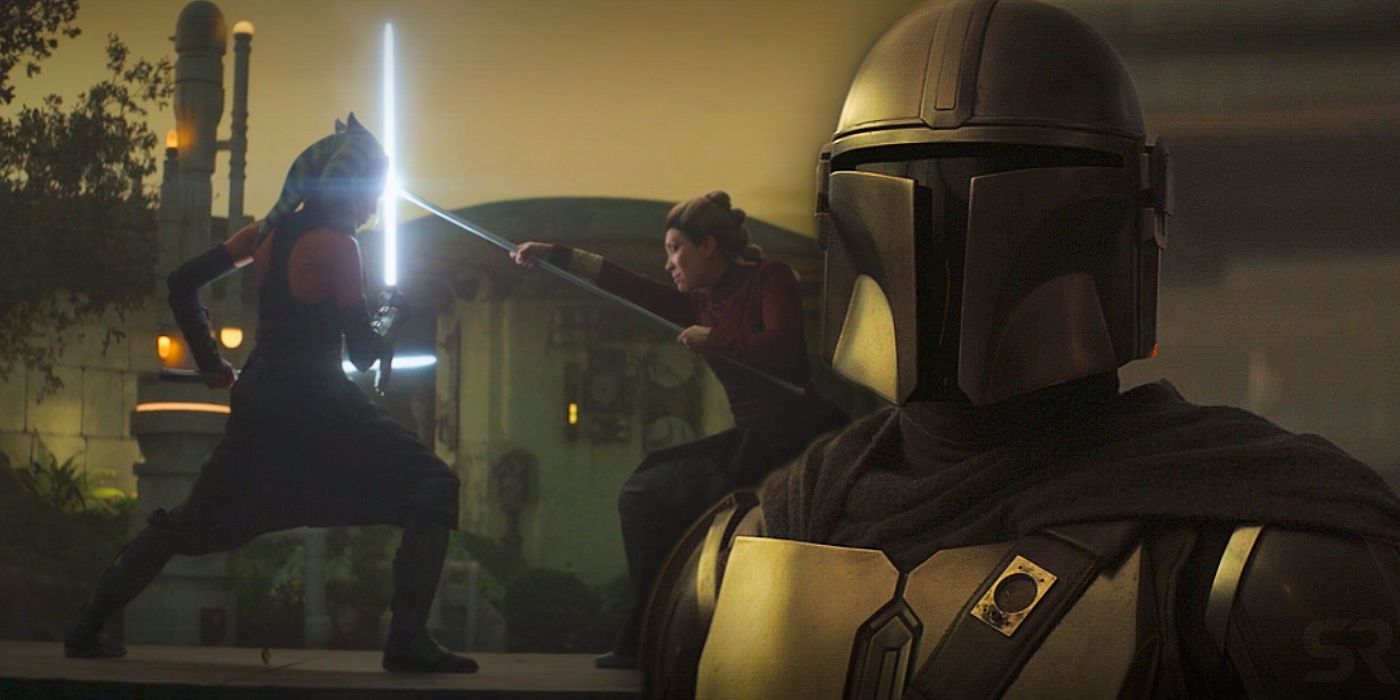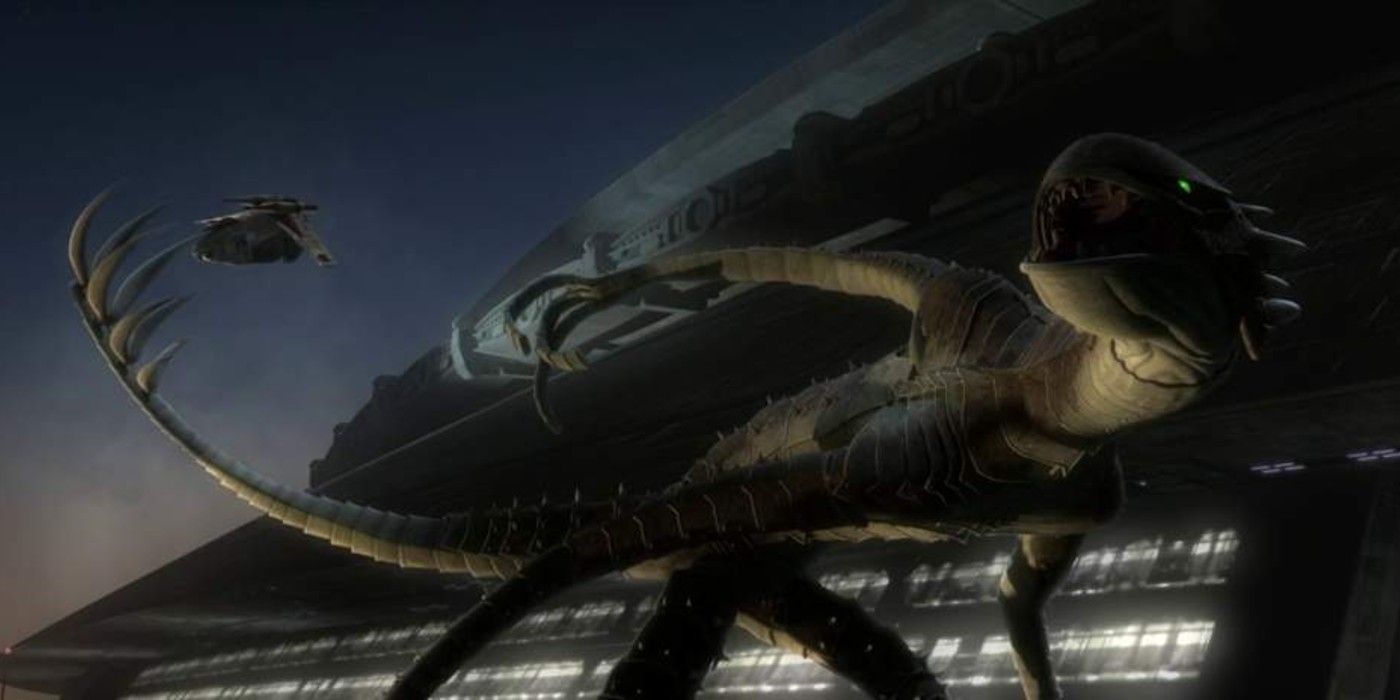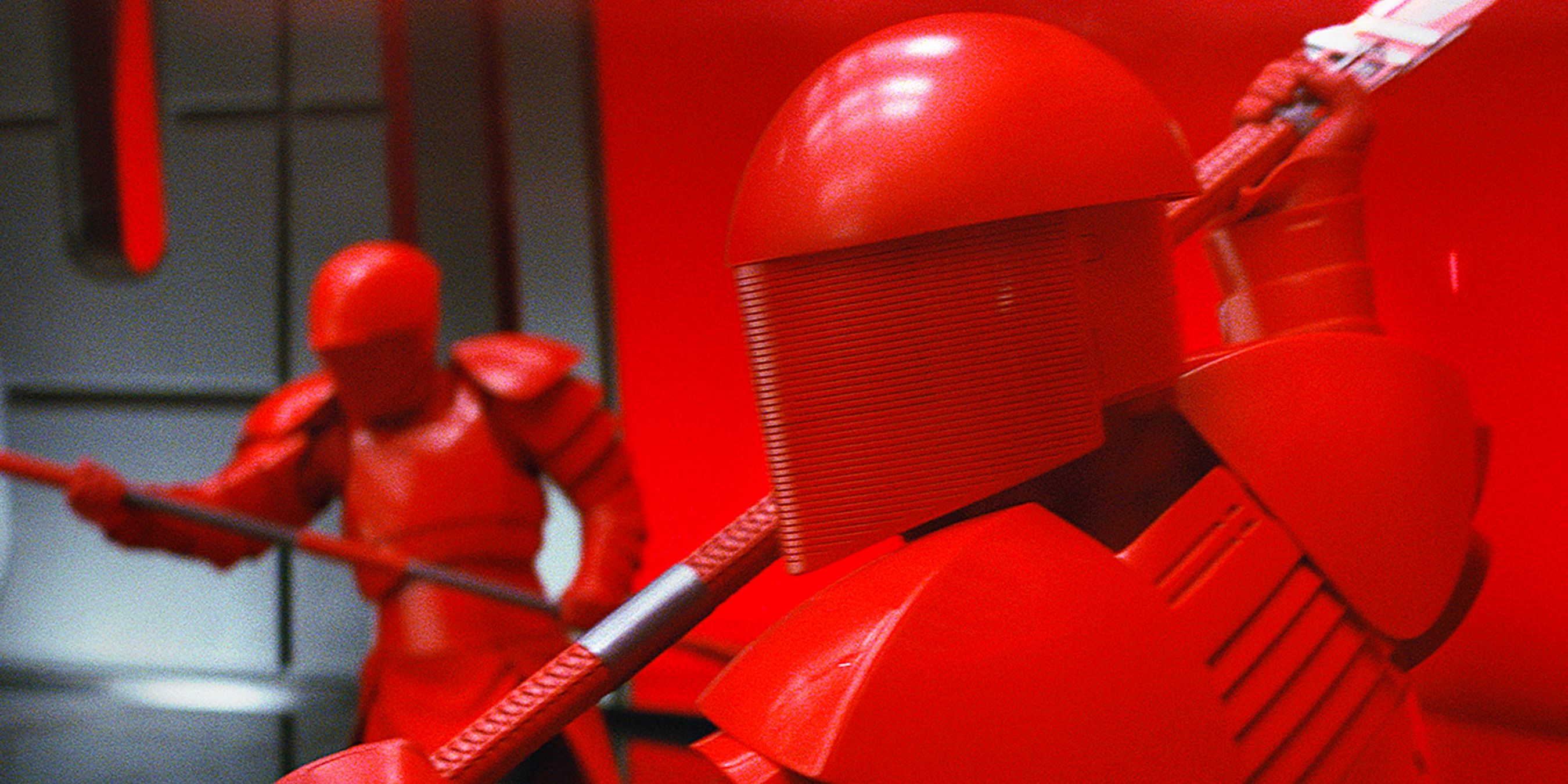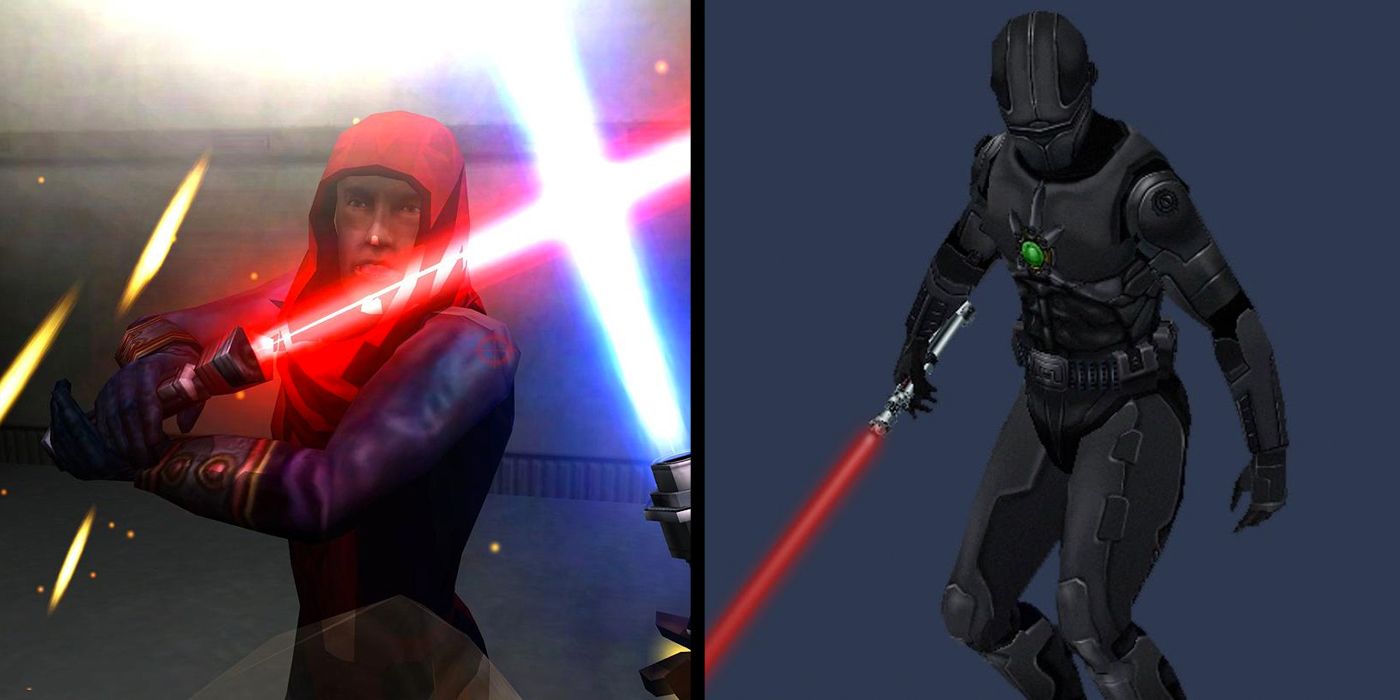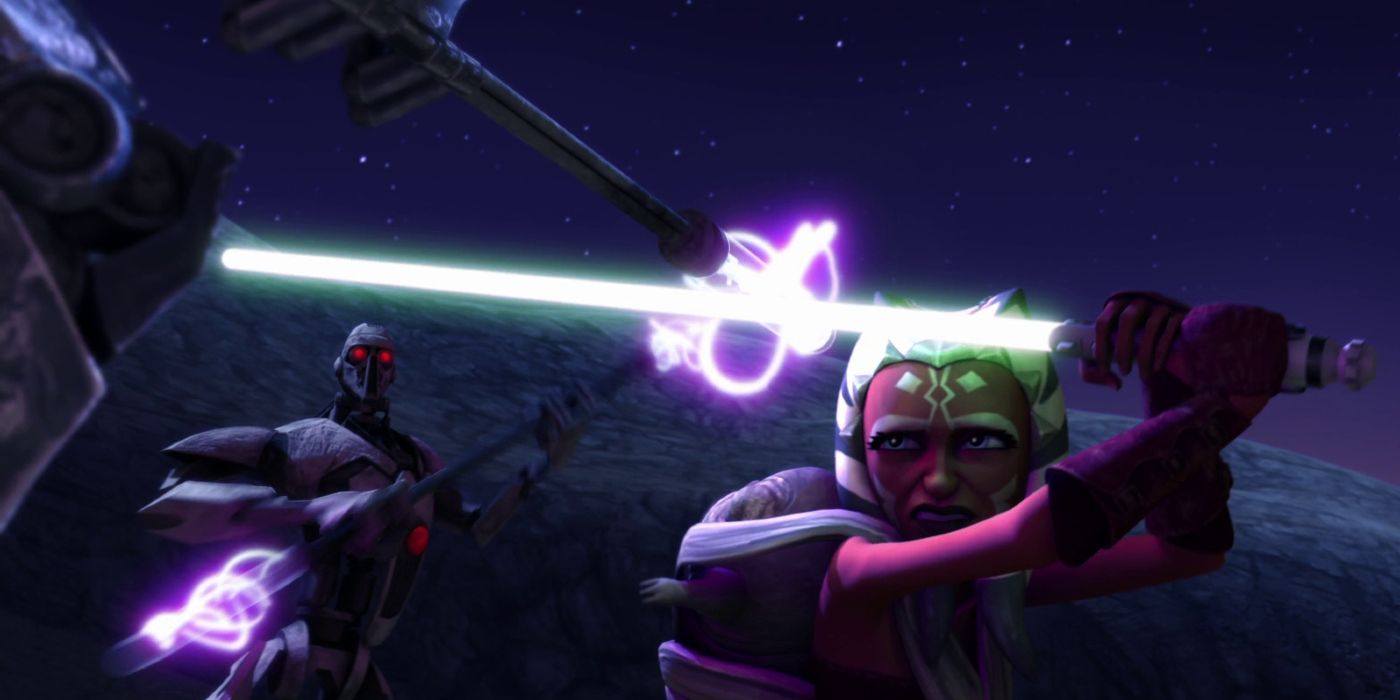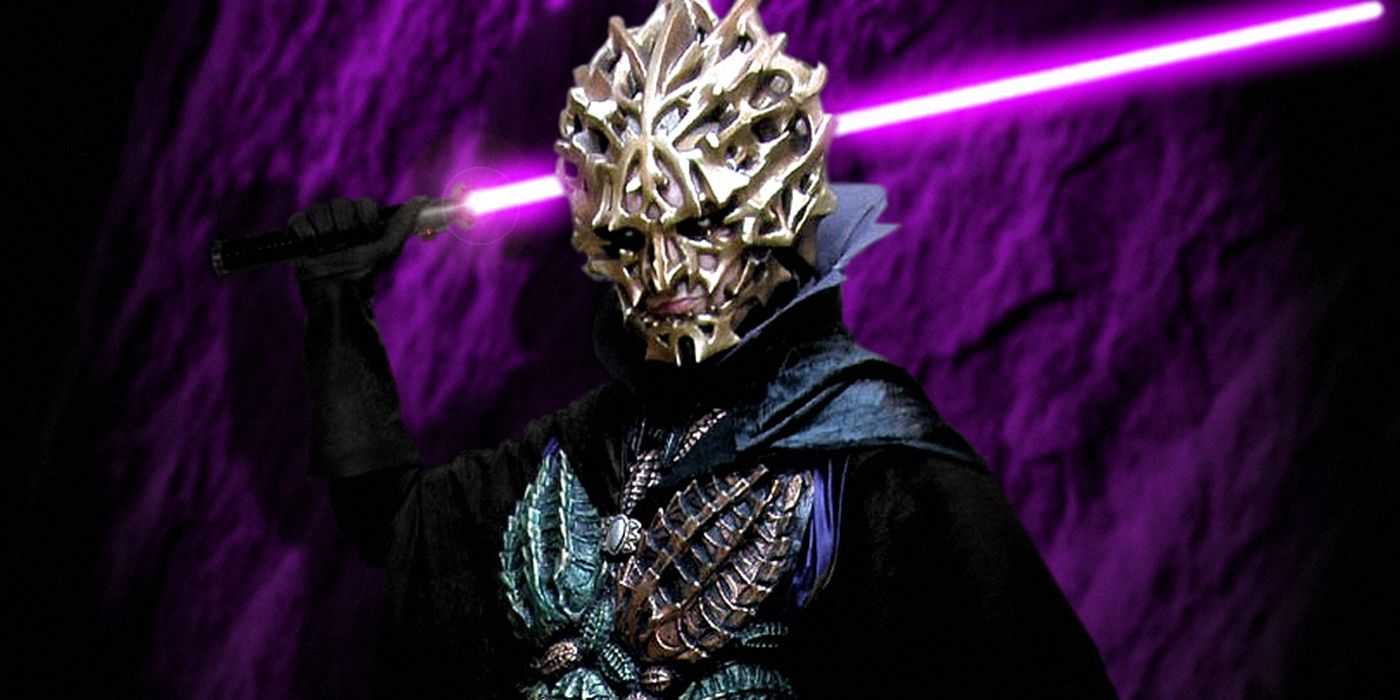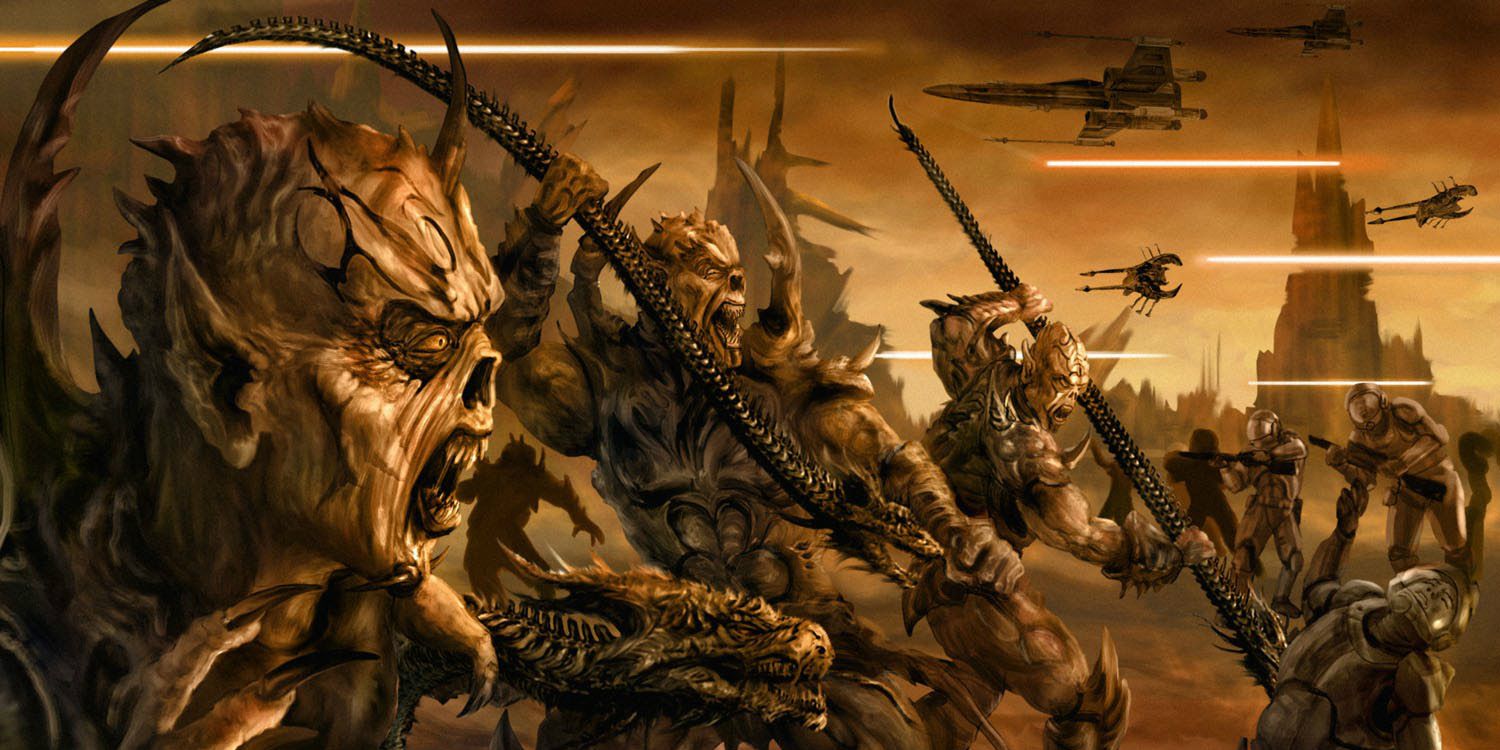Lightsabers, when wielded by a highly trained user, are one of the deadliest weapons in the Star Wars galaxy, able to cut through any substance, except for another lightsaber blade and a few other materials. But what were these exceptions? In both canon and the original Star Wars timeline, the Expanded Universe (now known as Legends), some rare materials can resist the blades of a lightsaber, with Mandalorian beskar being the most famous example.
In both canon and Legends, lightsabers are weapons that are powered by the Force and its dark side. Every lightsaber is powered by a crystal that serves as something of a “middleman” between the weapon’s builder and the Force (or the dark side). In canon, functional lightsaber crystals are called Kyber Crystals, and they are only found naturally (but are corrupted when taken by a dark side user), but in Legends, there are also “synth crystals” (created using tools and the Force or its dark side). Because of this, it can be assumed that materials that can block lightsaber blades are also in some way connected to the Force.
Most of the materials that can block lightsabers are rare metallic ores, the natural hides or shells of animals who are connected to the Force or the dark side in some way, and in some cases, even substances from another galaxy entirely. Some materials are a combination of various substances and energies that, when combined, can block lightsaber strikes. Moreover, not every material affects lightsaber blades the same way. Some can only resist lightsabers temporarily, some indefinitely, and others outright short out the blades on contact. These materials have been exploited by not only the Jedi and Sith themselves but also various groups who find themselves fighting lightsaber users, such as the Mandalorians and the Yuuzhan Vong empire.
Beskar
The most well-known example of a lightsaber-resistant material, beskar is inexorably tied to Mandalorian culture. The iconic Mandalorian suit of armor, made famous but Boba Fett, Din Djarin, and Sabine Wren, is traditionally made of beskar and is passed down through Mandalorian clans for generations. Mandalorians fittingly wear lightsaber-blocking armor, since they’ve been at war with the Jedi for much of their history. The Galactic Empire killed scores of Mandalorians and seized their beskar, leading to some of their warriors like Din Djarin to try to recover it after the Empire fell. During the Galactic Civil War, Sabine Wren, at that time an Imperial agent, deigned a superweapon that destroyed beskar and those wearing beskar armor. After joining the Rebellion, Wren made sure to destroy the weapon and any chance of it being rebuilt.
Beskar is not only used for armor but weapons as well. Magistrate Morgan Elsbeth wielded a beskar staff, allowing her to (briefly) hold her own against Ahsoka Tano. In Legends, beskar is traditionally used in Mandalorian armor as well, but there are even more examples of its other uses. Legends Mandalorians use beskar in gauntlets, knives, swords, manacles, and even musical instruments. Unsurprisingly, Mandalorian musical instruments are also designed to be used as lethal weapons.
Zillo Beast Hide
The massive reptilian Zillo Beast is native to Malastare, and the most notable one, believed to be the last of its kind, was awoken during the Clone Wars. The gargantuan beast has armored plating that is impervious to lightsaber strikes, but it isn’t invincible. Zillo Beasts can be killed through the use of a Dug toxin. The Zillo Beast’s natural resistance to lightsaber blades, along with the Clone Wars era’s creature apparently sensing the true nature of Chancellor Palpatine, indicates that the creature has a connection to the Force. The Clone Wars era Zillo was killed by Clone Pilots using the Dug toxin, and another, possibly its clone (secretly ordered by Palpatine), was killed on Benathy by Kylo Ren, who bypassed the creature’s hide and killed it from within.
Elite Praetorian Guard Armor and Weapons
The First Order’s Supreme Leader Snoke surrounded himself with well-trained, well-equipped, and bloodthirsty guards, who were prepared for the possibility of fighting against lightsaber users. Because of this, they wore armor and carried weapons that resist lightsaber blades. As seen throughout the Star Wars saga, powerful energy fields, such as force fields, can block lightsaber strikes. The armor worn by the Elite Praetorian Guards is not made of any lightsaber-resistant material, but it does create a miniature energy shield within the armor that provides limited protection against lightsabers. The energy field makes the armor extremely painful to wear, but the Praetorian Guards are trained to fight through it.
As seen in Star Wars: The Last Jedi, cutting strikes may only mildly damage the armor and its wearer. Kylo Ren is seen trying to cut through a guard at one point (who moments earlier, blocked a lightsaber strike with his forearms), and ended up killing him by breaking his neck, rather than dismemberment. The armor does have exploitable gaps, as Kylo did manage to behead a guard early in the fight, and powerful stabs from lightsabers are seen going through the armor. The guards’ weapons, like the Stormtroopers’ riot batons, also project energy fields that block lightsaber blades.
Cortosis
One of the most famous lightsaber-blocking materials in Star Wars Legends, cortosis is notoriously rare and difficult to mine for effective use. Nevertheless, cortosis is used throughout Legends as a measure against Jedi and Sith. Depending on its refinement, cortosis can have two different effects on lightsabers. The first is that it will resist lightsaber blades, though repeated strikes will eventually break through it. This type of cortosis was used by the CIS during the Clone Wars, as the armored shell of the Techno Union’s C-B3 Cortosis Battle Droids, who are reoccurring enemies in the video game Star Wars: The New Droid Army. The Imperial Remnant’s Empire Reborn faction would later make suits of cortosis armor for their dark side using, lightsaber-wielding Shadowtroopers, who attacked Luke Skywalker’s Jedi Academy on Yavin IV.
The second type of cortosis doesn’t block lightsabers but instead deactivates them for a brief period of time upon being struck. This variation was famously seen in I, Jedi and the Hand of Thrawn duology of novels. Cortosis isn’t seen nearly as much in canon, however, though a plot involving cortosis Separatist droid and Republic Clone Trooper armor was thwarted by Anakin, Padme, and Thrawn in the novel Thrawn: Alliances.
Phrik
Malleable when molten but one of the most durable materials in the galaxy when dried, phrik is another well-known lightsaber blocking material in Legends. Lighter and tougher than even cortosis, phrik was nevertheless quite rare as a result of being extremely expensive. Fittingly, the combined wealth of the corrupt corporate oligarchy, the CIS, allowed them to equip General Grievous’ IG-100 MagnaGuards with phrik electrostaffs, which they used to terrifying effect against Jedi and Clone Troopers. Palpatine himself built his lightsaber hilt with phrik, protecting the weapon from his lightsaber-using enemies. The vast resources of his Galactic Empire resulted in phrik being used to make the weapons and armor of their experimental Dark Troopers. Bail Organa’s phrik safe, containing a Jedi Holocron, was surprisingly able to survive the destruction of his homeworld, Alderaan. In canon, the Knight of Ren Vicrul used a phrik scythe as his signature weapon.
Neuranium
An extremely dense and durable material, neuranium mildly warped the space-time fabric, as noted in the Legends Star Wars: Episode III – Revenge of the Sith novelization. It’s all but impervious to scanners and also able to briefly resist the blades of lightsabers. For these exact reasons, Palpatine hid his lightsaber in a neuranium statue he displayed in his office. Before fighting Mace Windu, the Sith Lord activated the weapon with the dark side to burn it out of its protective home. It took a bit of time before the blade finally melted its way out, proving the statue’s effectiveness at blocking the Sith weapon. In canon, the video game Star Wars Jedi: Fallen Order allows the player to use neuranium as a lightsaber crafting material.
Orbalisk Carapace
Horrific parasites that resemble real-world horseshoe crabs, orbalisk live on Dxun, a moon of Onderon and a hotspot during the Mandalorian War sometimes referred to as the “Demon Moon.” Orbalisks are creatures of the dark side, so it’s unknown if their origins are even natural, but however they came to be, they are infamously difficult to kill, with hard carapaces that are highly resistant to lightsabers. Orbalisks attach themselves to their victims, feeding off of them and growing until they asphyxiate their host.
As dark side creatures, they are particularly drawn to Force users in general and dark side users specifically. The ancient Sith Lord Freedon Nadd discovered a way to turn orbalisks into an astoundingly protective armored suit, altering them to become symbiotic with their host instead of parasitic. The famous Sith Lord Darth Bane wore orbalisk armor, using the teachings of Nadd and taking full advantage of their protective shells.
Yuuzhan Vong Weapons and Armor
The Yuuzhan Vong are an extragalactic species who invaded the Star Wars galaxy shortly after the Galactic Civil War ended in the Legends timeline. Yuuzhan Vong abhor mechanical technology, using only living organic devices for space travel and warfare. Yuuzhan Vong are also an anomaly in the Force, and are difficult, bordering on impossible, to sense or affect with the various applications of the Force.
Fittingly, the Yuuzhan Vong use organic weaponry that can block lightsabers. One of their most common weapons is the amphistaff, a snake-like creature that could serve as a variety of weapons, such as a spear or a staff. Smaller amphistaffs are known as tsaisi, and were able to spray lethal venom at targets. Yuuzhan Vong warriors also wore armor made from the shells of vonduun crabs. This lightsaber-resistant armor was also famously used by the Sith Lord Darth Krayt decades after the Yuuzhan Vong War.
Ultrachrome
Most known for its use in starship hull, ultrachrome was almost impervious to projectile and energy weapons and protected against lightsaber strikes. Ultrachrome is unique in that it’s both a solid material that resists lightsaber blades and it creates an energy field that provides additional protection. Despite this, repeated lightsaber strikes would eventually cause the material to melt, making it better suited against other forms of attack. The material was famously used by the Empire and the Korun warrior Kar Vastor. Ultrachrome may have originated on the planet Haruun Kal, a world steeped in the Force and with a high population of Force sensitives, (including the Jedi Master Mace Windu), which could explain its lightsaber-resistant properties.
Songsteel
Typically used in armor or swords, songsteel is notoriously difficult to manipulate but was quite resistant to lightsaber blades. Appearing in the Star Wars Legends RPG campaign Living Force, a songsteel sword was used by Jedi Master Darrus Jeht during training sessions. Songsteel was found in the asteroid remains of Oblis, a world destroyed by an ancient Sith superweapon. This dark side-fueled catastrophe may have resulted in creating a Force-imbued metal that can block lightsabers.

